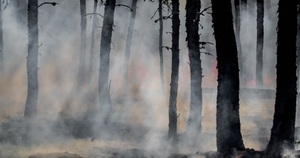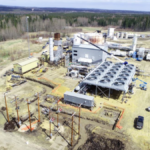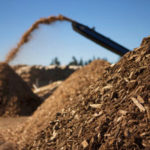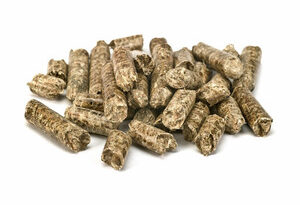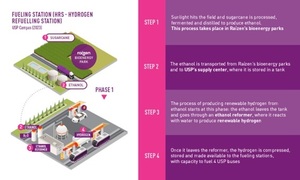Researchers find a way to use dead trees as fuel for power plants
Energy Disrupter
ADVERTISEMENT
Wildfires are becoming more prominent and prevalent in the Western United States every passing year. One contributing factor to these fires is bark beetles — small beetles that burrow and reproduce under the bark of trees and eventually cause the tree to decay and die if heavily infested.
Dead trees and forests killed by bark beetles are abundant in Western U.S. forests. According to Brigham Young University chemical engineering professor Andrew Fry, there are some forests where over 70 percent of the trees are dead and standing. These dead trees are the perfect fuel for wildfires and greatly increase the probability of extensive and severe fires.
To help solve this problem, Fry and other researchers at BYU have worked to develop new ways to convert these dead, decaying trees into a fuel that can be used in coal power plants. As an additional result, the use of this type of fuel reduces net carbon emissions.
“This project is really useful from two perspectives,” Fry said. “If we can reduce the wildland fire potential and offset some carbon emissions, it has more advantages.”
However, the transition from using a coal-based fuel to one using dead and decaying trees has its issues. These trees are biomass, renewable organic material that comes from plants, but can cause problems for traditional power stations not equipped to deal with it. Biomass fuel cause jams and blockages in the power plants, and minerals released from burning the wood can also coat mechanisms with ash, which can be dangerous.
“Ash is a bad thing in a combustor because it coats surfaces of heat transfer and places where heat needs to escape,” Fry said. “It reduces the efficiency of the whole power plant and can eventually shut you down if you don’t handle it right.”
With those issues in mind, Fry and his team worked to create a biomass fuel that would be safe for power plants to use with confidence. In a demonstration at the Hunter Power Plant in Emery County, Utah, Fry and his team proved it possible. There they burned 900 tons of biomass mixed with coal for 24 hours with great success. This demonstration was a major milestone, largely because it revealed that there were no significant changes in ash deposition from coal vs. co-fired coal and biomass material and showed that biomass fuel can be safely and effectively used in power plants.
This success can be largely attributed to the fuel the team created. Since the power plants are designed in ways that are meant to process coal, not trees, so creating a new type of fuel was essential in order to avoid making changes to the existing hardware.
To create this fuel, Fry used two different approaches. One was to shred the trees down to very small particles and then heat them for a period of time, a process called torrefaction. The other approach, called steam explosion, was used to pressurize the shredded wood material with steam, then release the pressure rapidly. These methods were crucial to the development of the new fuel because they provided a way to break down the lignin structure of the trees — the stranded material that makes wood so strong. Once that structure is broken, the processed biomass can be pressed into pellets and treated like coal.
Yet even with this newly developed fuel, some power stations may still be hesitant to make the switch.
“Power plants have to be sure the fuel is safe because if you take a power plant down then it hurts everyone in the whole system,” Fry said.
To ensure the safety of the new prepared fuel, Fry and his team conducted extensive tests and investigations. They used a combustor and other smaller-scale equipment that mimicked a power plant to test their prepared materials and new fuel to ensure it would not cause issues once they made the transition to real power plants.
The researchers plan to continue working with several power plants in hopes of making the use of biomass fuel a viable long-term option for coal-fired power plants.
The most recent study on the efforts can be found in the journal of Energy & Fuel.
Research collaborators include Xiaolong Li and Jost O.L. Wendt of the Department of Chemical Engineering and Institute for Clean and Secure Energy at the University of Utah. BYU graduate students Seyedhassan Fakourian and Boden Moyer are also co-authors.

